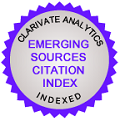Finding correlations between hop catalogs and real hoppy character in brewery conditions
DOI:
https://doi.org/10.18832/kp2021.67.537Keywords:
linalool, geraniol, myrcene, hop flavor, beer, hop oils, bitter acidsAbstract
Brewing recipe design is mainly based on brewer’s expertise, information available in catalogs and certificates of analysis (CoA’s). Hop schedule design and formulation has become an essential topic since hoppy craft beers took the scene. But how accurate is the flavor profile information provided in catalogs? How useful is the chemical composition profile information in CoA’s? Besides current research and tons of reported experiences, hops impact is still a mystery, and topics like biotransformation are black-boxes for brewers. In this study, nine single hopped beers were brewed, and a trained panel conducted sensorial beer analysis. Then, to asses hop impact, qualitative and process-related-quantitative beer characteristics were contrasted to find valuable correlations and trends between hop catalogs and final beers. Discrepancies with catalog qualitative data were reported. In addition to what is already described in the literature, here we describe how α-acids, linalool, myrcene, and geraniol (despite the classical use for these compounds) could predict positive and negative hop impact of nine different hop varieties on bitterness, flavor, and aroma, when they are applied in different brewing process steps. Also, with this pipeline we stand the basis of a tool to be improved, available for brewers, to better predict their brews and assess new hop varieties in real-life pilot brewing set ups.
References
Algazzali, V, Shellhammer, T. (2016). Bitterness Intensity of Oxidized Hop Acids: Humulinones and Hulupones. Journal of the American Societyof Brewing Chemists, 74(1),36–43. https://doi.org/10.1094/ASBCJ-2016-1130-01
Almaguer, C., Schönberger, Ch., Gastl, M., Arendt, E.K., Becker, T. (2014). Humulus lupulus - a Story That Begs to Be Told. A Review.” Journal of the Institute of Brewing, 120(4), 289–314. https://doi.org/10.1002/jib.160
Bailey, B., Schönberger, Ch., Drexler, G., Gahr, A., Newman, R., Pöschl, M., Geiger, E. (2009). The Influence of Hop Harvest Date on Hop Aroma in Dry-Hopped Beers. MBAA Technical Quarterly, 46(2), 3–6. https://doi.org/10.1094/tq-46-2-0409-01
BeerSmith LLC (2019). Beersmith 2. BeerSmith™ Home Brewing Software. Retrieved from http://beersmith.com/
Biendl, M., Engelhard, B., Forster, A., Gahr, A., Lutz, K., Müller-Auffermann, A., Mitter, W., Schmidt, R., Schonberger, C. (2015). Hops Their Cultivation, Composition and Usage. Nuremberg: Fachverlag Hans Carl, pp. 333. ISBN 978-3-418-00900-1
Dresel, M., Praet, T., Van Opstaele, F., A. Van Holle, A., Naudts, D., De Keukeleire, D., L. De Cooman, L., Aerts, G. (2015). Comparison of the Analytical Profiles of Volatiles in Single-Hopped Worts and Beers as a Function of the Hop Variety. BrewingScience, 68(1–2), 8–28.
Ferreira, C.S., de Chanvalon, E.T., Bodart, E., Collin, S. (2018). Why Humulinones Are Key Bitter Constituents Only After Dry Hopping: Comparison With Other Belgian Styles. Journal of the American Society of Brewing Chemists, 76(4), 236–246. https://doi.org/10.1080/03610470.2018.1503925
Fritsch, H.T., Schieberle, P. (2005). Identification Based on Quantitative Measurements and Aroma Recombination of the Character Impact Odorants in a Bavarian Pilsner-Type Beer. Journal of Agricultural and Food Chemistry, 53(19), 7544–7551. https://doi.org/10.1021/jf051167k
Gahr, A., Forster, A. (2014). A Comparison of the Analytical and Brewing Chracteristics of Cascade and Comet Hop Varieties as Grown in Yakima (USA) and Hallertau (Germany). Brewing Science, 67(11-12), 137–148. https://doi.org/10.23763/BrSc14-31forster
Goiris, K., Ridder, M., Rouck, G., Boeykens, A., Opstaele, F., Aerts, G., Cooman, L., Keukeleire, D. (2002). The Oxygenated Sesquiterpenoid Fraction of Hops in Relation to the Spicy Hop Character of Beer. Journal of the Institute of Brewing, 108(1), 86–93. https://doi.org/10.1002/j.2050-0416.2002.tb00129.x
Hanke, S., Herrmann, S., Rückerl, M., Schönberger, C., Back, W. (2008). Hop Volatile Compounds (Part II): Transfer Rates of Hop Compounds from Hop Pellets to Wort and Beer. Brewing Science, 61(7-8), 135–139.
Van Holle, A., Van Landschoot, A., Roldán-Ruiz, I., Naudts, D., De Keukeleire, D. (2017). The Brewing Value of Amarillo Hops (Humulus lupulus L.) Grown in Northwestern USA: A Preliminary Study of Terroir Significance. Journal of the Institute of Brewing, 123(3), 312–318. https://doi.org/10.1002/jib.433
Van Holle, A., Muylle, H., Haesaert, G., Naudts, D., De Keukeleire, D., Roldán-Ruiz, I., Van Landschoot, A. (2021). Relevance of Hop Terroir for Beer Flavour. Journal of the Institute of Brewing, 127(3), 238–247. https://doi.org/10.1002/jib.648
Inui, T., Tsuchiya, F., Ishimaru, M., Oka, K., Komura, H. (2013). Different Beers with Different Hops. Relevant Compounds for Their Aroma Characteristics. Journal of Agricultural and Food Chemistry, 61(20), 4758–4764. https://doi.org/10.1021/jf3053737
Kishimoto, T., Wanikawa, A., Kono, K., Shibata, K. (2006). Comparison of the Odor-Active Compounds in Unhopped Beer and Beers Hopped with Different Hop Varieties. Journal of Agricultural and Food Chemistry, 54(23), 8855–8861. https://doi.org/10.1021/jf061342c
Kryger, S., Colquhoun, T.A., Sarnoski, P.J., Pearson, B.J., Andrew, J., Keene, S.A., Odabasi, A.Z., Baker, S.M., Sims, C. (2020). Sensory and Compositional Analysis of Florida-Grown Hops. MBAA Technical Quarterly, 57(3), 134–141. https://doi.org/10.1094/tq-57-3-0731-01
Karabín, M., Hudcová, T., Jelínek, L., Dostálek, P. (2016). Biologically Active Compounds from Hops and Prospects for Their Use. Comprehensive Reviews in Food Science and Food Safety,15(3), 542–67. https://doi.org/10.1111/1541-4337.12201
Lafontaine, S.R., Hauser, D.G., Foster, R., Donaldson, J., Gamache, D., Shellhammer, T.H. (2018). Impact of Kiln Temperatures on the Aroma and Enzymatic Potential of Hops during Dry-Hopping. In EBC Symposium on “Recent Advances in Hop Science”, Nuremberg, 2018.
Lafontaine, S.R., Pereira, C., Vollmer, D.M., Shellhammer, T.H. (2018). The Effectiveness of Hop Volatile Markers for Forecasting Dry-Hop Aroma Intensity and Quality of Cascade and Centennial Hops. Brewing Science, 71(11-12), 116–140. https://doi.org/10.23763/BrSc18-19lafontaine
Lafontaine, S., Varnum, S., Roland, A., Delpech, S., Dagan, L., Vollmer, D., Kishimoto, T., Shellhammer, T. (2019). Impact of Harvest Maturity on the Aroma Characteristics and Chemistry of Cascade Hops Used for Dry-Hopping. Food Chemistry, 278, 228–239. https://doi.org/10.1016/j.foodchem.2018.10.148
Lafontaine, S.R., Shellhammer, T.H. (2019a). How Hoppy Beer Production Has Redefined Hop Quality and a Discussion of Agricultural and Processing Strategies to Promote It. MBAA Technical Quarterly , 56(1), 1–12. https://doi.org/10.1094/tq-56-1-0221-01
Lafontaine, S.R., Shellhammer, T.H. (2019b). Investigating the Factors Impacting Aroma, Flavor, and Stability in Dry-Hopped Beers. MBAA Technical Quarterly, 56(1), 13–23. https://doi.org/10.1094/tq-56-1-0225-01
Lafontaine, S., Varnum, S., Roland, A., Delpech, S., Dagan, L., Vollmer, D., Kishimoto, T., Shellhammer, T. (2019). Impact of Harvest Maturity on the Aroma Characteristics and Chemistry of Cascade Hops Used for Dry-Hopping. Food Chemistry, 278, 228–239. https://doi.org/10.1016/j.foodchem.2018.10.148
Lermusieau, G., Bulens, M., Collin, S. (2001). Use of GC−Olfactometry to Identify the Hop Aromatic Compounds in Beer. Journal of Agricultural and Food Chemistry, 49(8), 3867–3874. https://doi.org/10.1021/jf0101509
Lesschaeve, I., Noble, A.C. (2005). Polyphenols: Factors Influencing Their Sensory Properties and Their Effects on Food and Beverage Preferences. The American Journal of Clinical Nutrition, 81(1), 330S-335S. https://doi.org/10.1093/ajcn/81.1.330S
Lewis, M., Young, T. (2002). Brewing. Springer Science & Business Media, pp. 408. ISBN-10: 0306472740; ISBN-13: 978-0306472749
Maye, J.P., Smith, R., Leker, J. (2016). Humulinone Formation in Hops and Hop Pellets and Its Implications for Dry Hopped Beers. MBAA Technical Quarterly, 53(1), 23–27. https://doi.org/10.1094/tq-53-1-0227-01
Meilgaard, M.C., Civile, G.V., Carr, T.B. (1999). Sensory Evaluation Techniques. New York: CRC Press, pp. 416. ISBN 9781003040729
Morcol, T.B., Matthews, P.D., Kennelly, E.J. (2021). Differences in Leaf Chemistry and Glandular Trichome Density between Wild Southwestern American Hop (Humulus neomexicanus) and Commercial Hop Cultivars. Journal of Agricultural and Food Chemistry, 69(27), 7798–7814. https://doi.org/10.1021/acs.jafc.1c02710
Naya, Y., Kotake, M. (1972). The Constituents of Hops (Humulus lupulus L.). VII. The Rapid Analysis of Volatile Components. Bulletin of the Chemical Society of Japan, 45(9), 2887–2891. https://doi.org/10.1246/bcsj.45.2887
Nielsen, T. (2009). Character Impact of Hop Aroma Compounds. In: T.H. Shellhammer (Ed.) Hop flavor and aroma : proceedings of the 1st International Brewers Symposium. St. Paul : American Society of Brewing Chemists. ISBN: 9780977051984
Oladokun, O., James, S., Cowley, T., Dehrmann, F., Smart, K., Hort, J., Cook, D. (2017). Perceived Bitterness Character of Beer in Relation to Hop Variety and the Impact of Hop Aroma. Food Chemistry, 230, 215–224. https://doi.org/10.1016/j.foodchem.2017.03.031
Oladokun, O., Tarrega, A., James, S., Cowley, T., Dehrmann, F., Smart, K., Cook, D., Hort, J. (2016). Modification of Perceived Beer Bitterness Intensity, Character and Temporal Profile by Hop Aroma Extract. Food Research International, 86, 104–111. https://doi.org/10.1016/j.foodres.2016.05.018
R-Core-Team (2020). R: A language and environment for statistical computing. R Foundation for Statistical Computing, Vienna, Austria. Retrieved from https://www.R-project.org/
Rettberg, N., Biendl, M., Garbe, L.A. (2018). Hop Aroma and Hoppy Beer Flavor: Chemical Backgrounds and Analytical Tools—A Review. Journal of the American Society of Brewing Chemists, 76(1), 1–20. https://doi.org/10.1080/03610470.2017.1402574
Roberts, M.T., Dufour, J.-P., Lewis, A.C. (2004). Application of Comprehensive Multidimensional Gas Chromatography Combined with Timeof-Flight Mass Spectrometry (GC × GC-TOFMS) for High Resolution Analysis of Hop Essential Oil. Journal of Separation Science, 27(5–6), 473–478. https://doi.org/10.1002/jssc.200301669
Sharp, D.C., Townsend, M.S., Qian, Y., Shellhammer, T.H. (2014). Effect of Harvest Maturity on the Chemical Composition of Cascade and Willamette Hops. Journal of the American Society of Brewing Chemists, 72(4), 231–238. https://doi.org/10.1094/ASBCJ-2014-1002-01
Ferreira, C.S., de Chanvalon, E.T., Bodart, E., Collin, S. (2018). Why Humulinones Are Key Bitter Constituents Only After Dry Hopping: Comparison With Other Belgian Styles. Journal of the American Society of Brewing Chemists, 76(4), 236–246. https://doi.org/10.1080/03610470.2018.1503925
Takoi, K., Itoga, Y., Takayanagi, J., Matsumoto, I., Nakayama, Y. (2016). Control of Hop Aroma Impression of Beer with Blend-Hopping Using Geraniol-Rich Hop and New Hypothesis of Synergy among Hop-Derived Flavour Compounds. Brewing Science, 69(11–12), 85–93.
Takoi, K., Koie, K., Itoga Y., Katayama, Y., Shimase, M., Nakayama, Y., Watari, J. (2010). Biotransformation of Hop-Derived Monoterpene Alcohols by Lager Yeast and Their Contribution to the Flavor of Hopped Beer. Journal of Agricultural and Food Chemistry, 58(8), 5050–5058. https://doi.org/10.1021/jf1000524
Tielkemeier, Spencer. 2020. Exploring the World of ‘Survivable’ Compounds. Avaiblable from https://www.youtube.com/watch?v=SDIsUb2yyp0 [2020-09-09]
Ting, P.L., Ryder, D.S. (2017). The Bitter, Twisted Truth of the Hop: 50 Years of Hop Chemistry. Journal of the American Society of Brewing Chemists, 75(3), 161–180. https://doi.org/10.1094/ASBCJ-2017-3638-01
Tressl, R., Friese, L., Fendesack, F., Koeppler, H. (1978). Studies of the Volatile Composition of Hops during Storage. Journal of Agricultural and Food Chemistry, 26(6), 1426–1430. https://doi.org/10.1021/jf60220a036
Vollmer, D.M, Shellhammer, T.H. (2016a). Dry Hopping on a Small Scale: Considerations for Achieving Reproducibility. MBAA Technical Quarterly, 53(3), 140–144. https://doi.org/10.1094/tq-53-3-0814-01
Vollmer, D.M., Shellhammer, T.H. (2016b). Influence of Hop Oil Content and Composition on Hop Aroma Intensity in Dry-Hopped Beer. Journal of the American Society of Brewing Chemists, 74(4), 242–249. https://doi.org/10.1094/ASBCJ-2016-4123-01

Downloads
Published
How to Cite
Issue
Section
License
Copyright (c) 2021 Danilo Legisa, Ing.

This work is licensed under a Creative Commons Attribution 4.0 International License.







